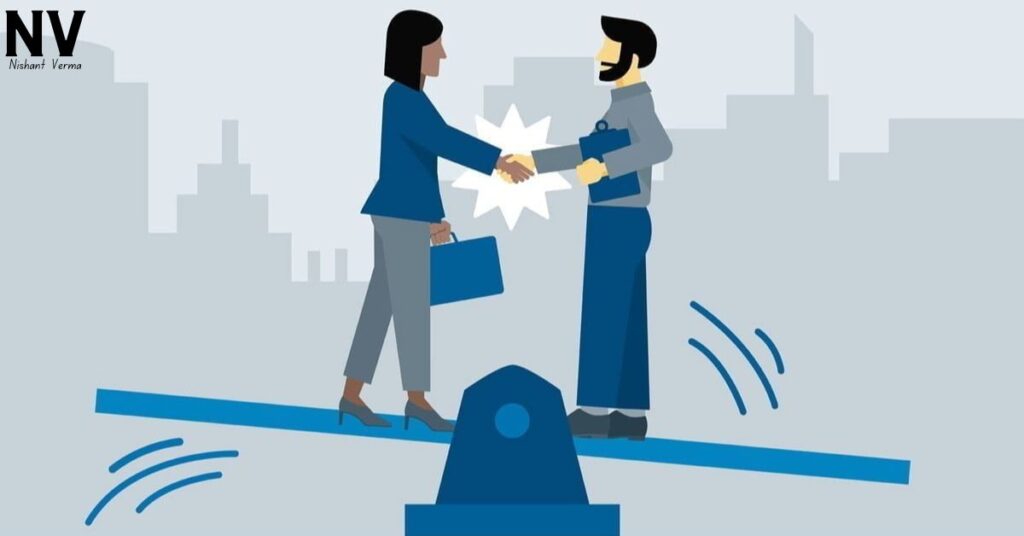In the dynamic world, Art of sales negotiation is a crucial skill that can make the difference between sealing a deal and losing a valuable opportunity. Mastering the art of negotiation requires a combination of strategic thinking, effective communication, and adaptability. In this article, we will explore key strategies to enhance your Art of sales negotiation skills in the realm of sales.

Understanding Your Customer: Art of sales negotiation
In the world of selling things, understanding the person or company you’re talking to is like having a secret key to a successful Art of sales negotiation. Imagine you’re trying to sell a magic pen, but the person you’re talking to doesn’t like to write – that would be a problem! So, before you start talking about selling, you need to do some detective work on the person or company you want to sell to.
This detective work is called “conducting thorough research,” which means you gather as much information as you can about the other side. It’s like knowing the likes and dislikes of your friend before planning a surprise party. For businesses, this means finding out what makes the company tick.
Start by figuring out what problems they’re facing – we call these “pain points.” Maybe they’re struggling to keep up with all the paperwork, or perhaps they need a faster way to communicate with their customers. Knowing these pain points helps you offer solutions that can make their life easier.
Next up, think about their big dreams for their business – we call these “business goals.” If you know what they’re aiming for, you can tailor your talk to show how your product or service can help them reach those goals. It’s like being the superhero they need for their business challenges.
Why is all this detective work important? Well, imagine trying to sell ice cream to someone in the freezing Arctic – not a great match! But if you know your customer’s needs, concerns, and goals, you can speak their language. You can say, “Hey, I understand your struggles, and here’s how my magic pen can make things better for you.”
So, in the big world of selling, being a good detective before the talk is your superpower. It’s the key to opening doors and making sure your product or service fits perfectly into the story of the person or company you’re selling to. After all, who doesn’t want their magical solution to make their business dreams come true?

Setting Clear Objectives:
Clearly define your goals and setting clear objectives before entering a negotiation. What is the minimum acceptable outcome for you? What are the ideal terms? Having a clear understanding of your priorities will provide a roadmap during the Art of sales negotiation process and help you avoid making concessions that could negatively impact your position.
Building Rapport:
Establishing a positive relationship with your client is essential. Building rapport creates a foundation of trust, making it easier to navigate through the Art of sales negotiation process. Listen actively to your client’s concerns, acknowledge their viewpoints, and demonstrate empathy. A strong relationship can often lead to a more cooperative and mutually beneficial negotiation.

Effective Communication:
Mastering the art of Art of sales negotiation requires effective communication skills. Clearly articulate your value proposition, emphasizing the unique benefits your product or service offers. Use language that resonates with your client’s needs and aspirations. Additionally, be attentive to non-verbal cues, as they can provide valuable insights into your client’s reactions and emotions.
Flexibility and Adaptability:
Negotiations rarely go exactly as planned. Being flexible and adaptable is key to navigating unexpected twists and turns during the process. Be open to exploring alternative solutions and compromises that can still meet both parties’ objectives. The ability to pivot and find common ground demonstrates your commitment to a mutually beneficial outcome.
Creating Win-Win Scenarios:
A successful Art of sales negotiation is one where both parties feel they have gained value. Strive to create win-win scenarios that align with your client’s goals while meeting your business objectives. This collaborative approach not only strengthens your client relationships but also increases the likelihood of future collaborations.
Knowing When to Walk Away:
In the game of Art of sales negotiation , knowing when to step back is as important as knowing how to move forward. Imagine you’re trying to agree on something, like buying a toy or deciding what game to play. Sometimes, the rules or choices just don’t work for you, and that’s when it’s okay to say, “I need to walk away for now.”
In the world of selling things, walking away means saying, “This talk isn’t going the way I hoped.” Why? Well, it’s like when you’re trading stickers with a friend. If they ask for all your favourite stickers and only offer you one in return, you might say, “I can’t agree to that.” Similarly, in business, if the terms of the deal don’t match what you need or if the other person is asking for something too big, it might be time to say, “Let’s pause and think about this more.”
Sometimes, clients might want things that just don’t make sense for you. Maybe they want you to sell your toy for a price that’s too low, or they ask for extra things that are impossible to give. In these situations, it’s like playing a game where the rules aren’t fair. It’s okay to stop playing that game and find a better one.
Walking away doesn’t mean you’re giving up; it means you’re being smart. It’s like saying, “Let’s take a break and come back with fresh ideas.” By doing this politely, you might even make the other person think about their choices. They might realize, “Oh, maybe I was asking for too much,” and they might be willing to find a better solution when you return.
Think of it like trying to build a tower with blocks. If the blocks don’t fit together well, the tower might fall. But, if you take a moment, figure out which blocks work best, and then continue, you can build a stronger tower.
So, in the big world of talking and making deals, remember it’s alright to walk away when things aren’t working. It’s not giving up; it’s making sure the game is fair and the outcome is good for everyone. And who knows, by taking a step back, you might find a way to create an even better deal when you come back to the table.
Conclusion:
Mastering the Art of sales negotiation is a continuous process that requires a combination of preparation, communication skills, and adaptability. By understanding your customers, setting clear objectives, building rapport, and creating win-win scenarios, you can elevate your negotiation game and increase your success in closing deals. Remember, effective negotiation is not just about getting what you want; it’s about building lasting and mutually beneficial relationships with your clients.




